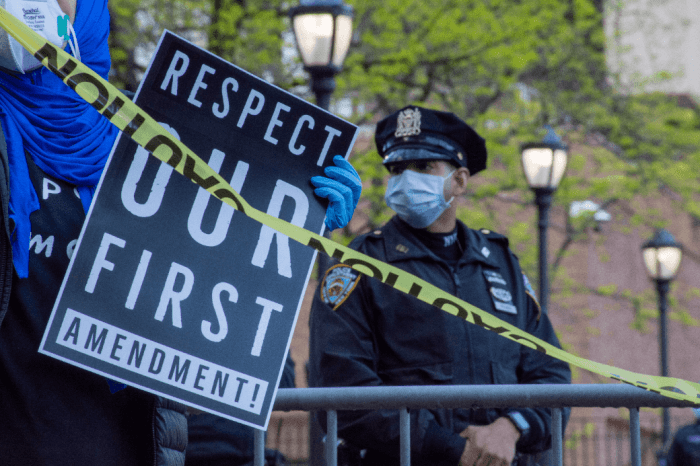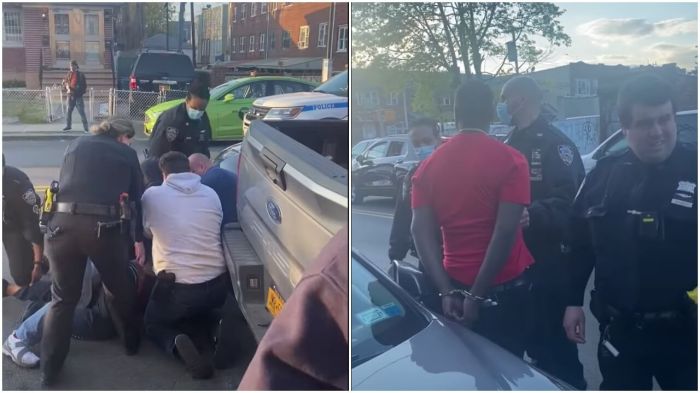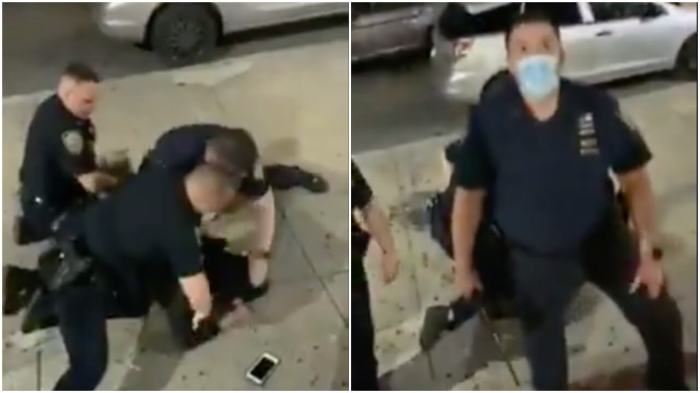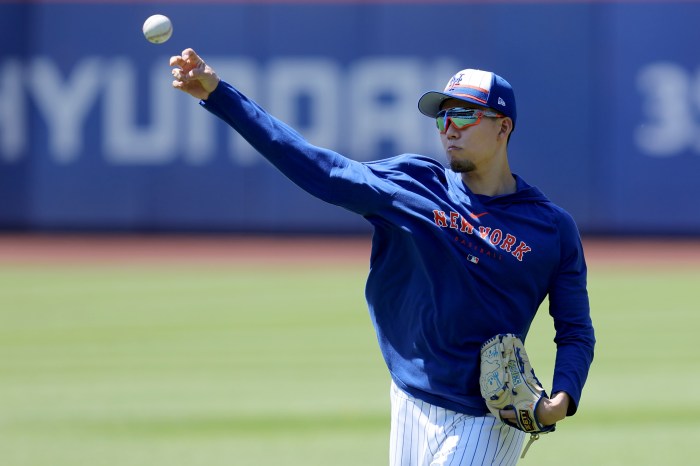The Police Department’s enforcement of social distancing measures continues to hit black and brown New Yorkers hardest, according to new data gleaned by the Legal Aid Society, which shows a stark disparity between the severity of enforcement among various communities around the borough.
Residents of three Brooklyn neighborhoods — Canarsie, Brownsville and Williamsburg — were most likely to be targeted by police enforcement, according to the society’s analysis of 311 complaints, summonses and arrests released on Thursday.
Canarsie led in social distancing-related summonses with 66, while Brownsville saw 28 summonses and three arrests. The population of both neighborhoods is primarily black and Latino, according to Legal Aid’s analysis.
Williamsburg, which has seen a high rate of police enforcement during Jewish religious ceremonies, has seen 39 coronavirus-related summonses and three arrests over the course of the pandemic.
In contrast, wealthier neighborhoods like Park Slope, along with Manhattan’s Upper East Side, and Chelsea had zero social distancing summonses or arrests over the same period, according to Legal Aid.
“These data strongly suggest that social distancing enforcement looks different based on the neighborhood you live in not because social distancing practices are different, but because the NYPD is much more likely to look the other way in white neighborhoods while they ticket and arrest people for the same behavior in Black and Latino neighborhoods,” said Corey Stoughton, attorney-in-charge of Legal Aid’s Special Litigation Unit.
“Alongside the Department’s own data about enforcement and the spate of disturbing videos documenting aggressive enforcement against people of color, a powerful case exists for shifting away from a law enforcement strategy and reinvesting resources in a public health approach to this pandemic,” Stoughton added.
An additional map released by Legal Aid depicting 311 complaints related to social distancing puts Greenpoint at the top. The northern Brooklyn neighborhood saw the highest volume of complaints in the city with 514, followed by Central Harlem with 389 and Times Square with 246. Respectively, each of these areas had five arrests, one arrest and ten summonses, and one arrest.
Legal Aid’s data comes on the heels of multiple high-profile arrests — including a string of violent arrests in eastern Brooklyn, and one involving a mother and a child inside the Atlantic Avenue-Barclays Center subway station — all of which succeeded a May 2 scuffle between plainclothes officers conducting a stop of two people in the East Village. What began as social distancing enforcement ended in a weed and weapons arrests, but the brutality of the cops involved shocked many who saw the video and led to one officer having his gun and badge taken away.
The incident led to calls from activists calling on Mayor Bill de Blasio to stop having uniformed officers enforcing social distancing and other COVID-19 policies.
The Police Benevolent Association, a union that represents most members of the NYPD, spoke up against social distancing enforcement, and argued that the condemnation of racial biases in social distancing enforcement were a predictable result of mismanagement up top.
“This situation is untenable. The NYPD needs to get cops out of the social distancing enforcement business altogether. The cowards who run this city have given us nothing but vague guidelines and mixed messages, leaving the cops on the street corners to fend for ourselves,” said PBA president Pat Lynch in a statement. “Now that the inevitable backlash has arrived, they are once again throwing us under the bus.”
Shea, however, has pushed back on the idea that enforcement has been dolled out in an unequal manner.
“I think we can all agree what we’ve seen on some of those videos is incredibly disheartening, it’s not what we want to see, and it’s quite frankly disturbing,” the commissioner said at a May 13 press conference. “We also have to recognize that police officers are human. They are you and they make mistakes, they’re not infallible. So, that’s the backdrop. But I will push back strongly on any notion that this is business as usual for the NYPD or that this is ‘racist police.’ I think this could not be anything further from the truth.”
This story first appeared on AMNY.com.























